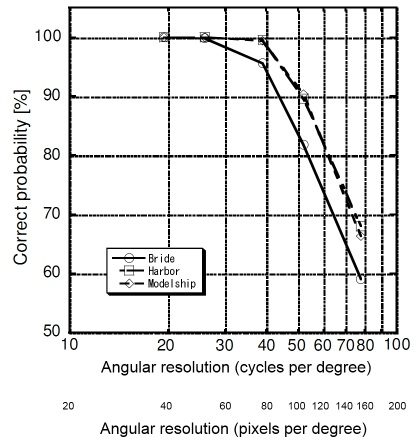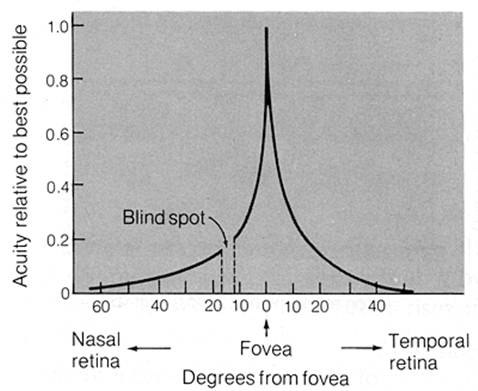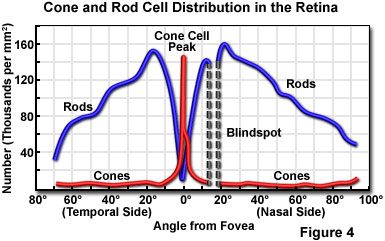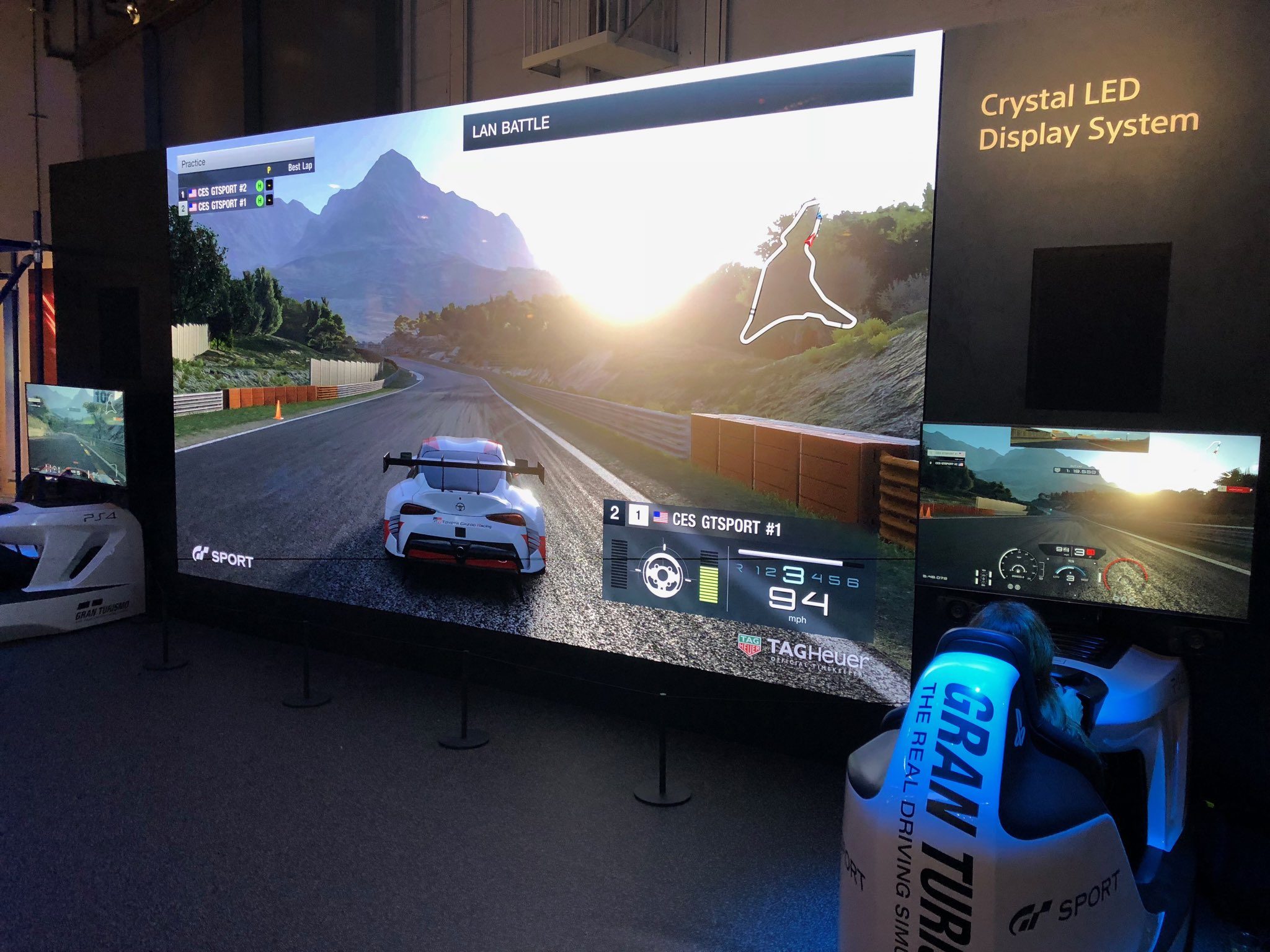lmao at the human eye is only 2k. The human eye is far more complex and sophisticated than any tech, Its not discrete but if you were trying to compare, research from a NASA scientist estimate it at the equivalent of 576 MP. 4K is about 8.5MP.
We won't even go into the colour range, movement capture and adaptability of the human eye.
The human eye drops off in resolution perception over 80 pixels per degree with a maximum of 200 pixels per degree turning comparisons in absolute guess work.
That's the optimal resolution which you only get in the center of the fovea.
Beyond 10 degrees your eye only perceives 1/5th of your maximum resolution.
So the absolute maximum a screen needs to be at 200 pixels per degree with 40 degree viewing angle is 8K. That's at 1.2 x the diagonal of the screen as seating distance. 6.5 ft from a 65" tv, 4 ft from a 40" tv or 2ft from a 20" monitor.
For VR you need at the very most, 30K per eye at 150 degree fov (the max per eye). That's a waste though as you only need a 2 degree cone at 200 pixels per degree to fool your eyes. Beyond 5 degree from the fovea 100 pixels per degree or 15K is enough. Beyond 10 degrees 40 pixels per degree is enough or 6K for the remainder of the screen. Beyond 30 degrees 20 pixels per degree or 3K is plenty. Beyond 60 degrees 10 pixels per degree is plenty.
With foveated rendering you would need 10*200 + 10*100 + 40*40 + 60*20 + 180*10 is 7.6K per eye to simulate a perfect 30K per eye.
That's taking the absolute guess work maximum into account, using half, 100 pixels per degree as starting point you only need to render 3.8K per eye to get a near perfect 150 degree fov in VR. One catch, you still need a 15K screen per eye to put it on.
Currently PSVR only has average of 10 pixels per degree. It already has a higher density in the middle due to the warping of the lenses. Foveated rendering has no use yet as on the edges it's already down to close to 5 pixels per degree.
Color, brightness and contrast play a role as well of course. Lower contrast and lower brightness lower resolution perception.
Color peaks at about 15 degrees. You actually don't see much color in the fovea.
Adapting resolution based on the brightness and contrast in a scene isn't that practical though. Neither is using different color resolution while rendering. Those are very useful when it comes to compression for wireless VR. Chroma subsampling has been used since the start of digital video, cutting the color resolution to 25% before any further compression. Blu-ray only uses 960x540 color, 4K blu-ray 1920x1080. Specialized compression algorithms for VR based on eye tracking can reduce the required bandwidth a lot.
Adapting resolution based on eye tracking is very promising. A VR headset made to the specifications of the human eye can be very efficient.
Btw if you like to know what pixels per degree you are used to, use this formula
1080p (16:9) -> distance x 38.45 / diagonal
4K (16:9) -> distance x 76.8 / diagonal
(of course use the same units for distance and diagonal)









